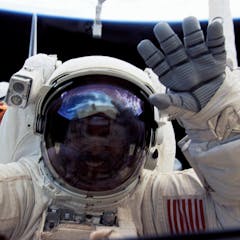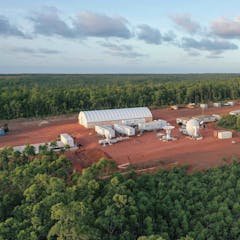
Articles on Rockets
Displaying 1 - 20 of 45 articles

Science fiction and technological innovation feed off each other in an ongoing back-and-forth that can play out over decades.

It will be painful if Israel and Hamas militants continue to exchange rocket fire and airstrikes. But invading Gaza would increase the devastation even further.

The bloody ground attacks by Hamas in Israel caused the biggest shock. But the unprecedented scale of rocketry and successful use of armed drones contributed to the surprise.

The Overview Effect describes the transformative impact of seeing Earth from space and feeling profoundly connected to our planet and concerned for it. That’s at odds with the impact of space tourism.

The launch of a new rocket is always an exciting event. SpaceX’s ‘go fast and fail’ approach means that even though the test ended with engineers blowing up the rocket, it was a valuable first flight.

China has invested massively in its space capabilities in recent years and is now a major competitor with the US. But according to a space policy expert, the US still dominates space by most measures.

The Jupiter Icy Moons Explorer and Europa Clipper missions will arrive at Jupiter in the 2030s and provide researchers with unprecedented access to the icy moons orbiting the gas giant.

Rockets used to launch satellites fall back to Earth, and as their number grows, the risk faced by people living on the ground — or flying in airplanes — increases.

China has completed construction of the Tiangong space station, and science projects are now underway. The station is an important piece of China’s ambitious plans for space activity in coming years.

The European Space Agency has recruited the world’s first-ever disabled astronaut. But we’re still a long way from space being accessible to all.

The southern hemisphere is more likely to be hit by space debris than the northern one.

Australia may soon have three commercial space launch facilities

From harming satellites to crashing the ISS, the Ukraine war could soon extend to space.

NASA has only mapped 40% of the potentially dangerous asteroids that could crash into Earth. New projects will boost that number, and upcoming missions will test tech that could prevent collisions.

The fastest things ever made by humans are spacecraft, and the fastest spacecraft reached 330,000 mph – only 0.05% the speed of light. But there are ways to go faster.

Such a mission could be developed soon, allowing astrophysicists to take selfies of the solar system and use the Sun’s gravity as a lens to peer deep into space.

In the past decade, the number of satellites in orbit has skyrocketed thanks to tiny electronics and cheap launches. The crowded night sky is posing problems for astronomers and astronauts.

The Inspiration4 mission sent four civilians to space for three days. Though still funded by a billionaire, the mission is a step forward in the nascent space tourism industry.

Here’s what a space tourism industry led by Bezos, Branson and Musk might mean for the planet.

Improved rocket technology and tactics have made the ongoing Gaza-Israel conflict different from the one in 2014. Israel’s defences have been stressed.
